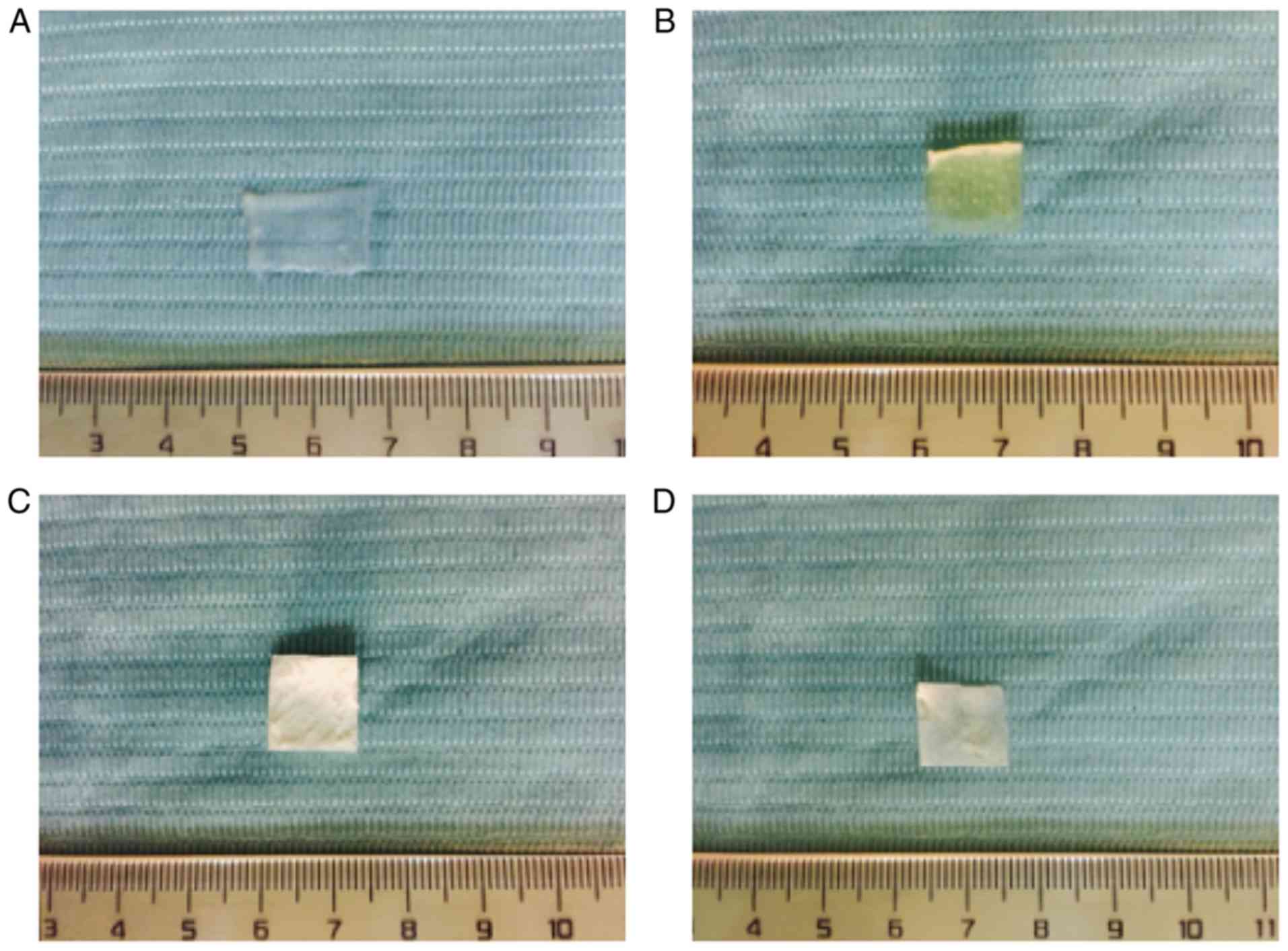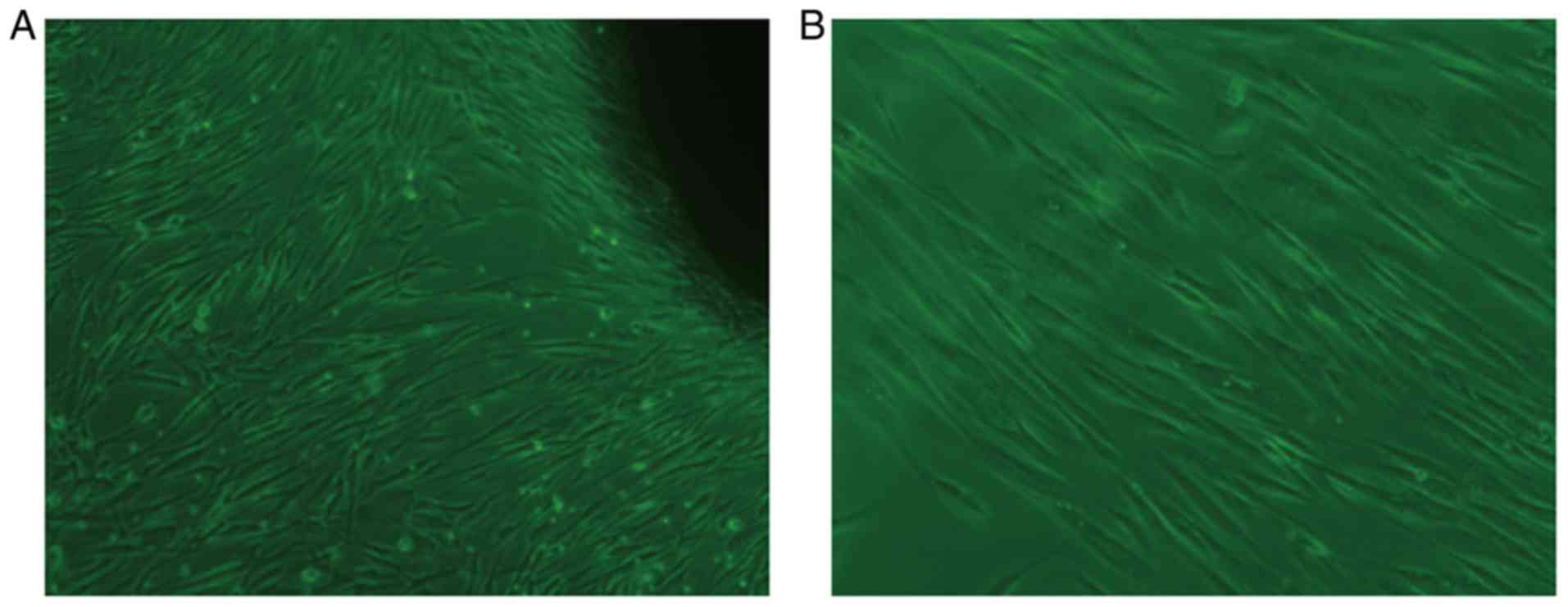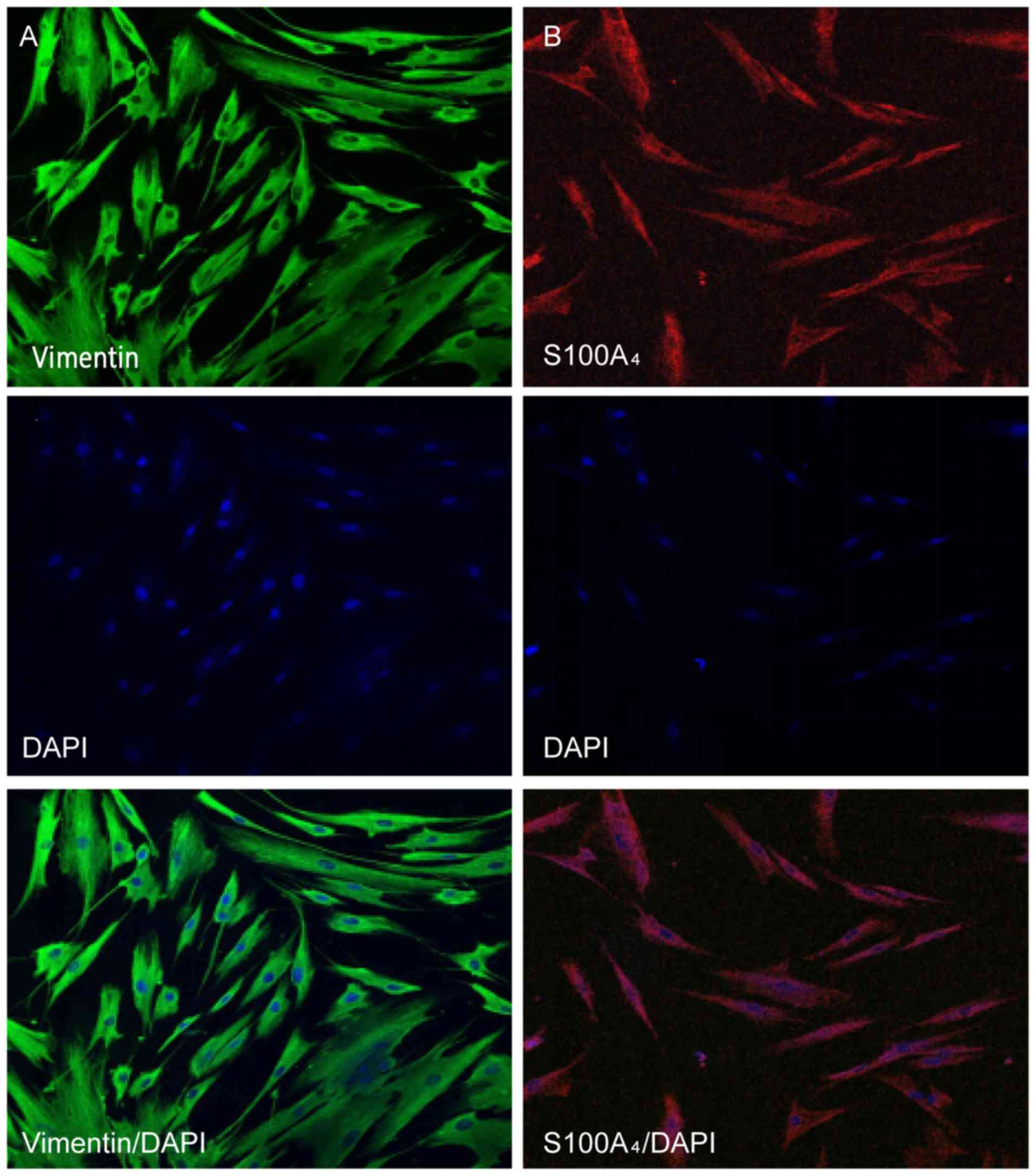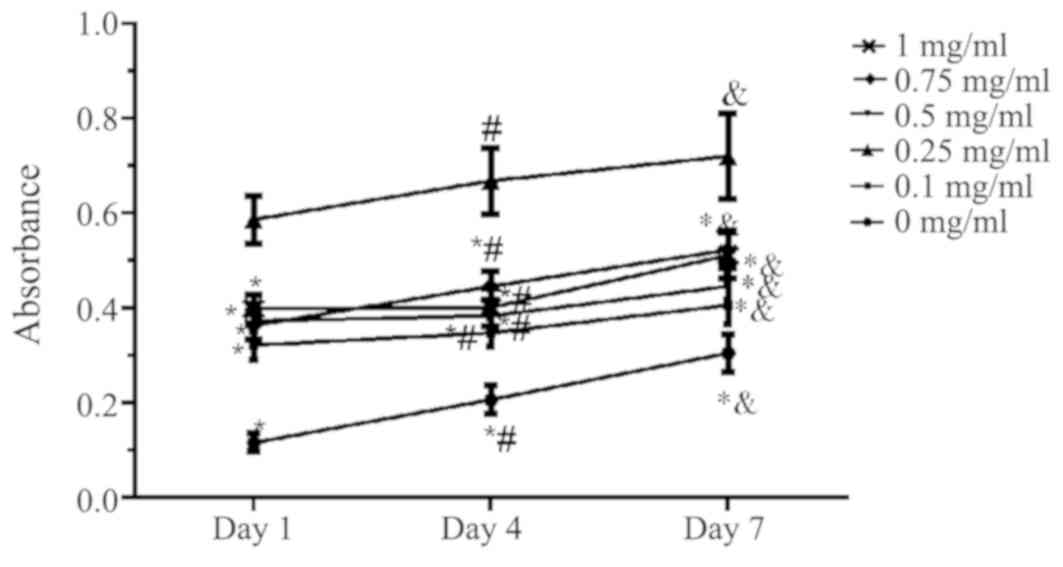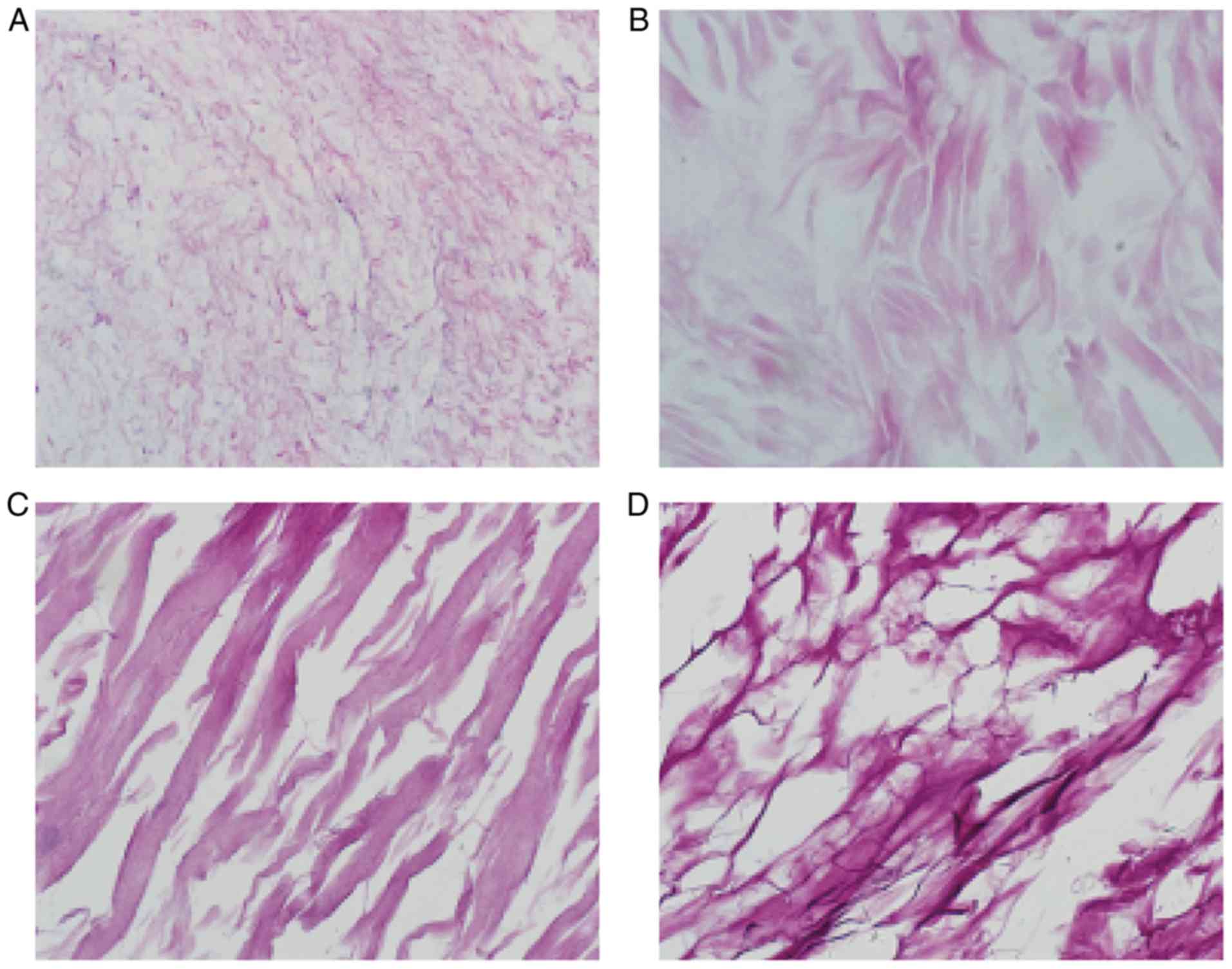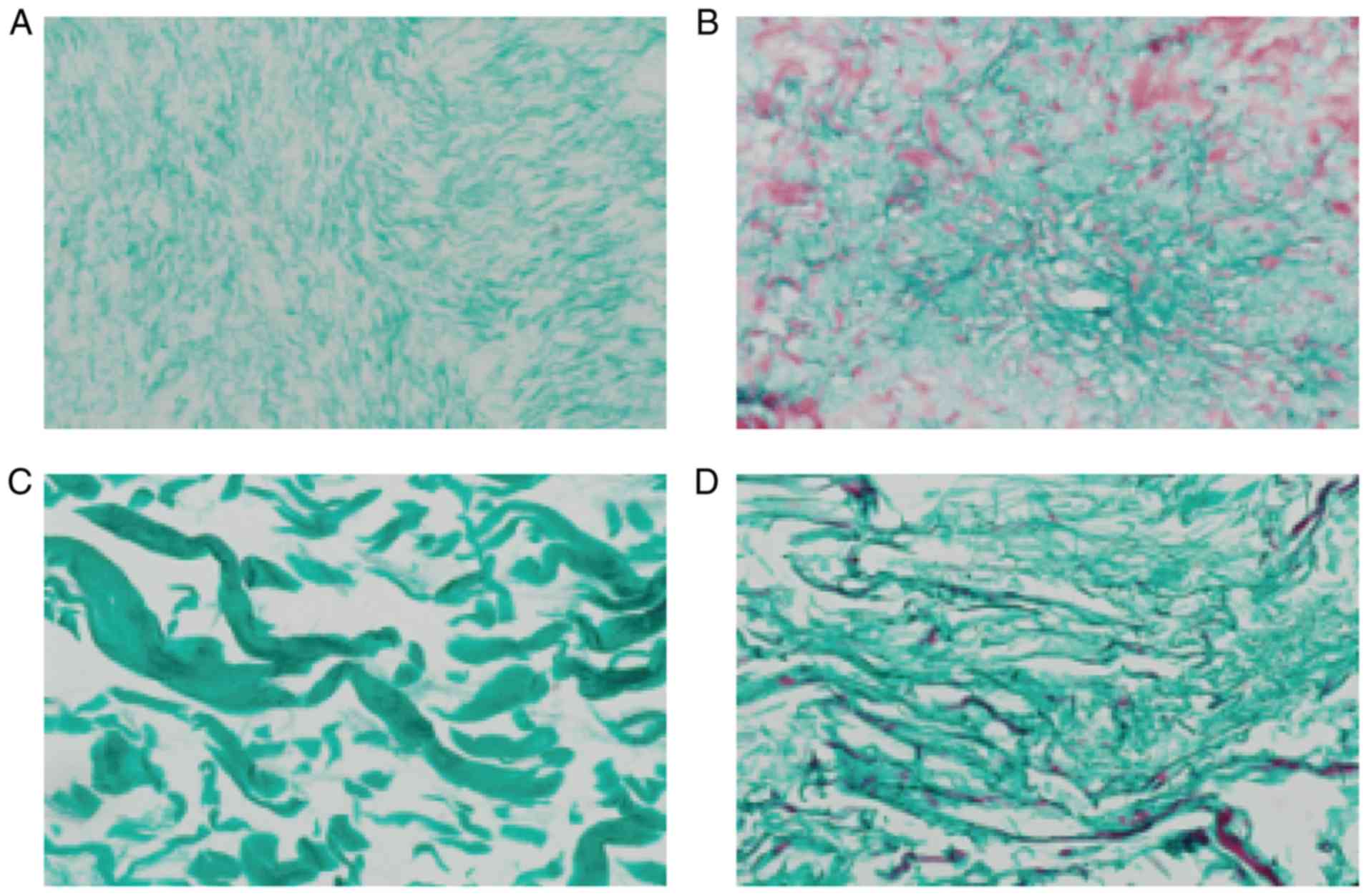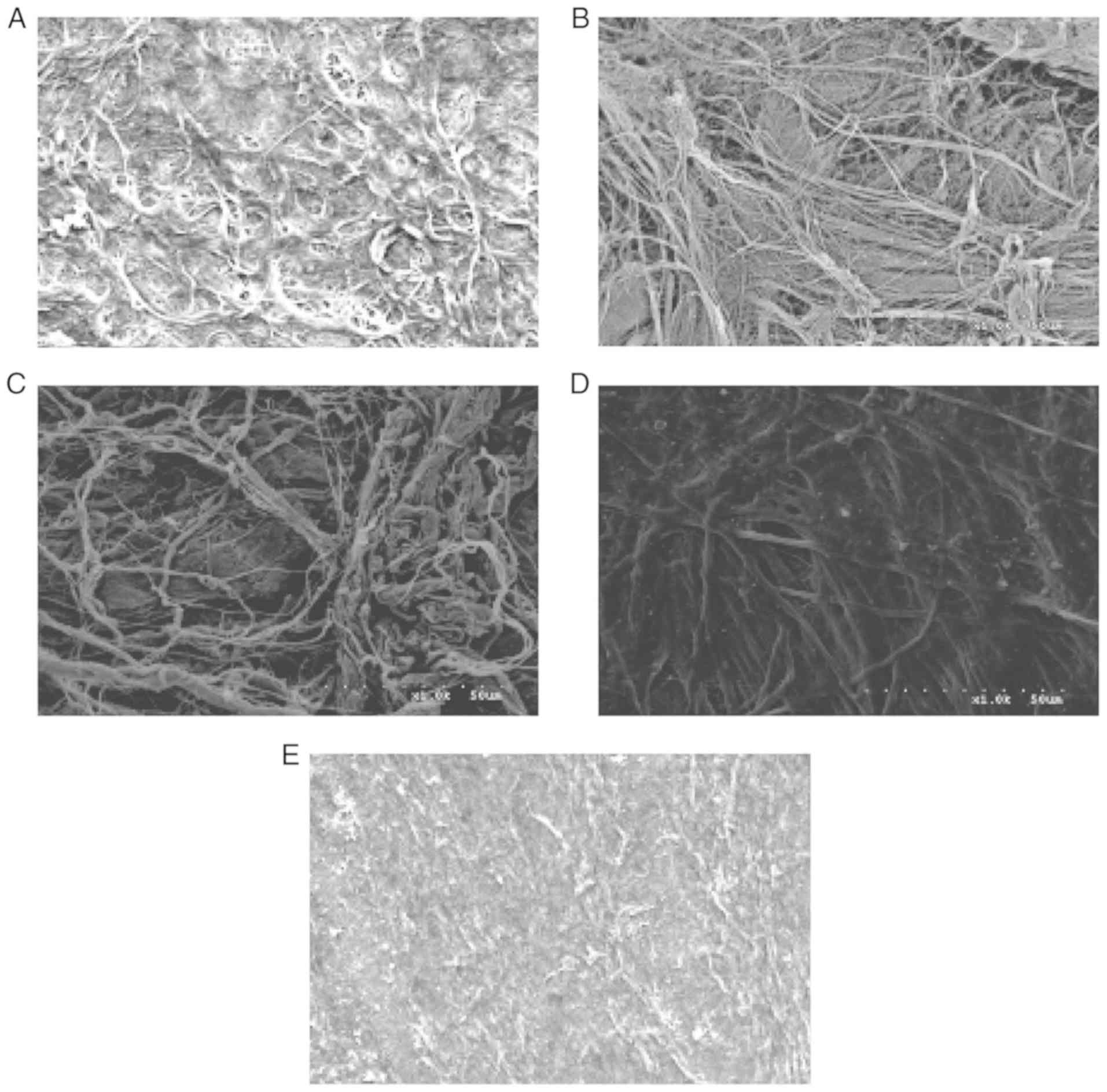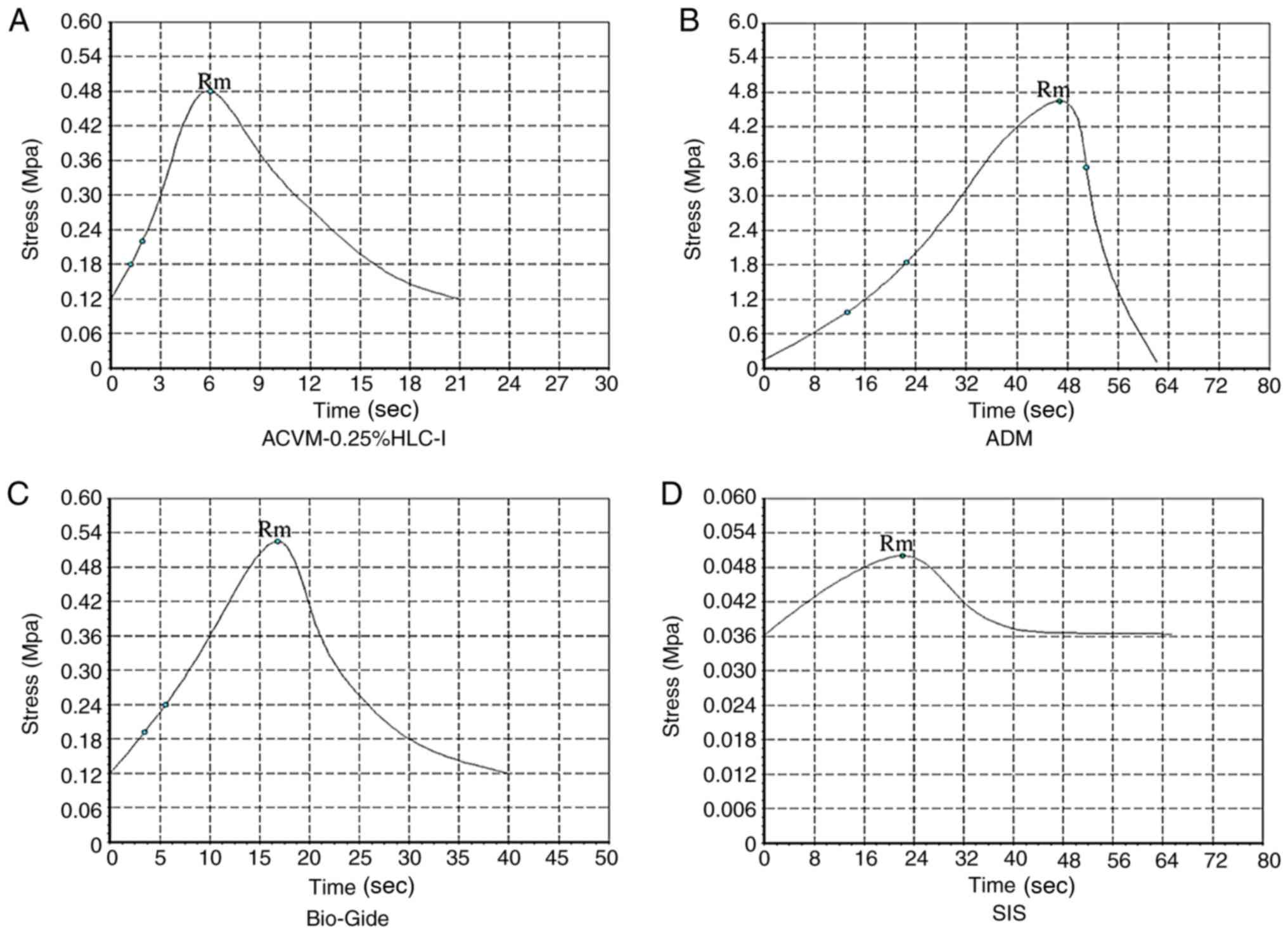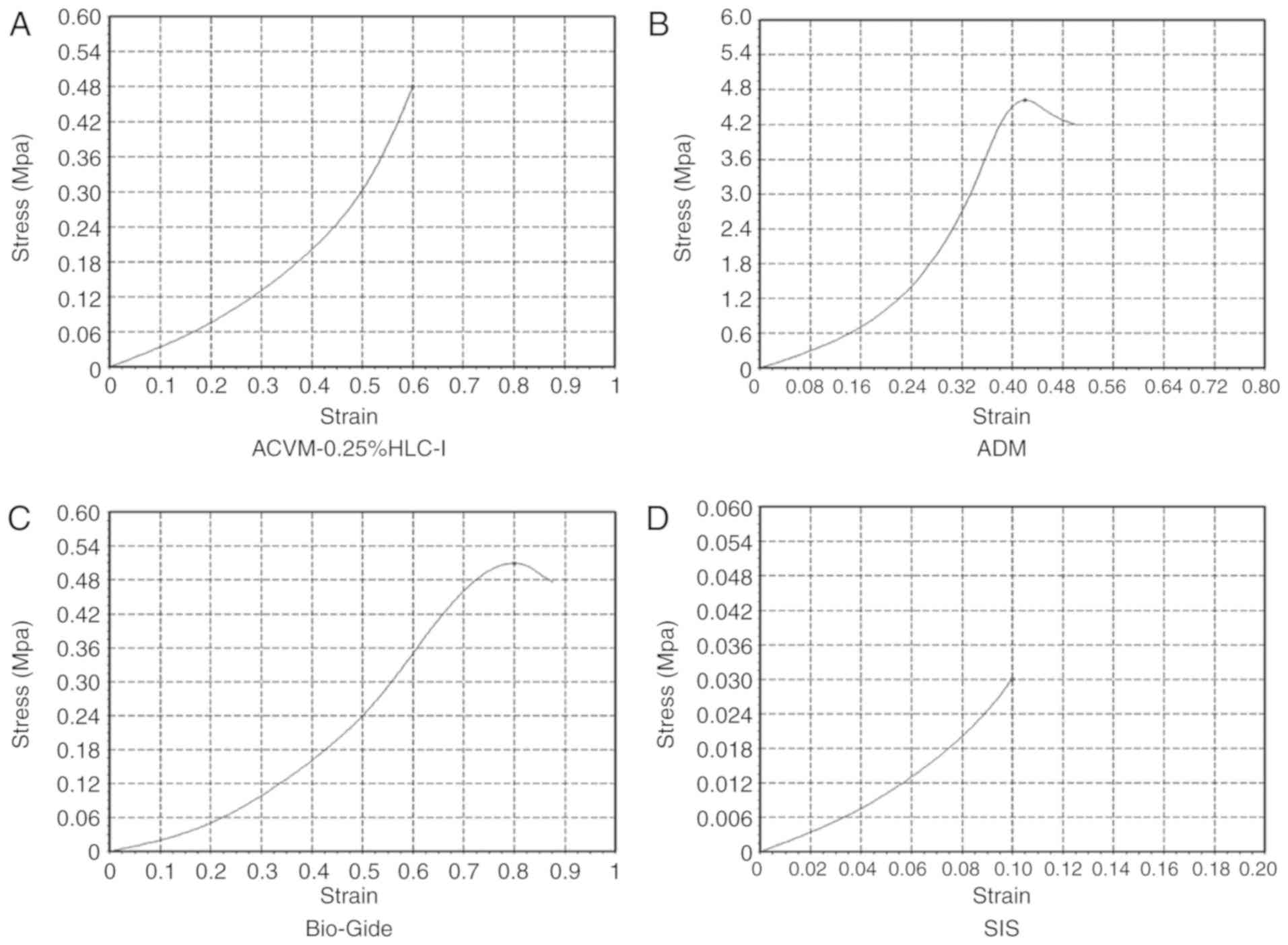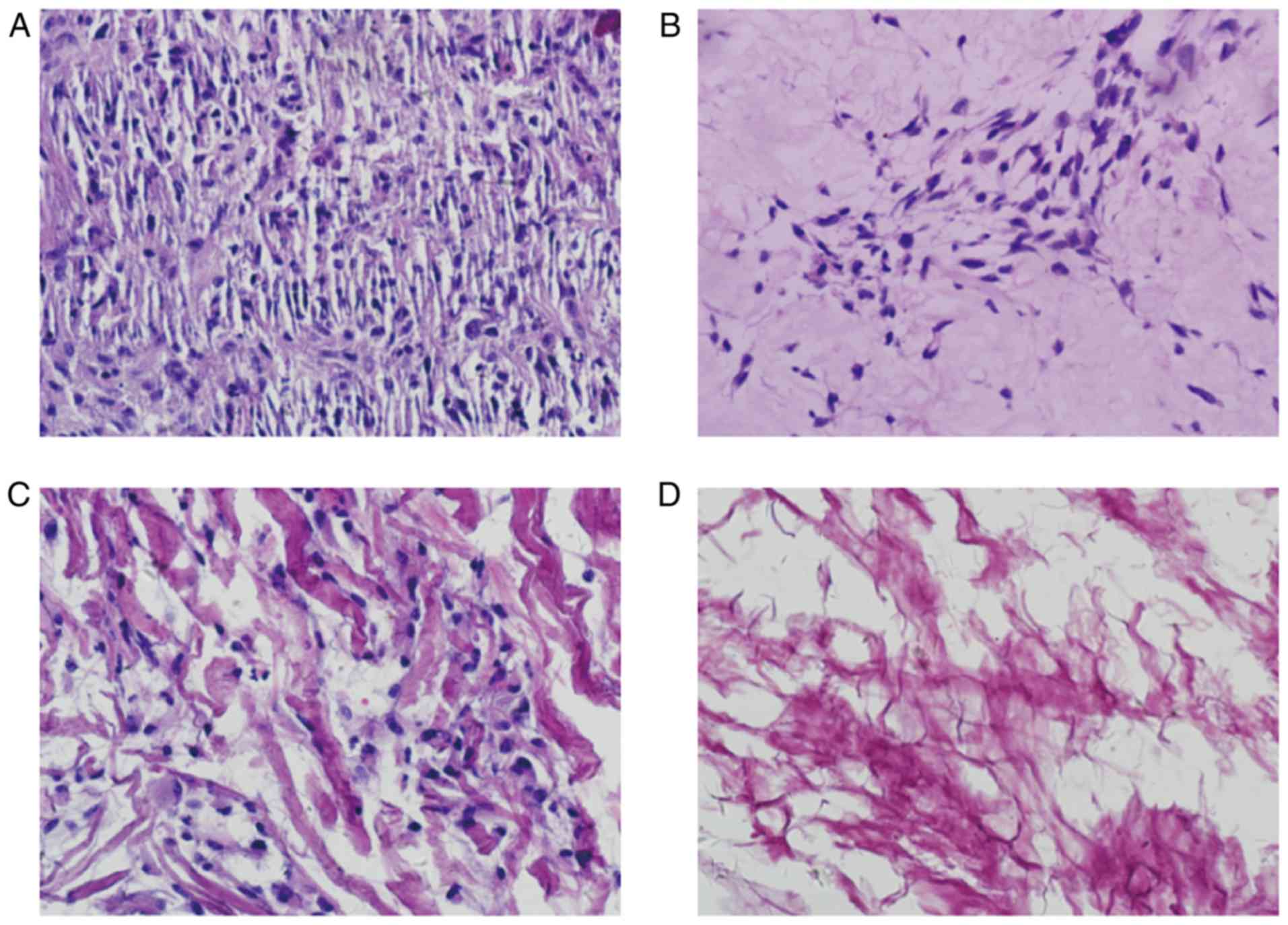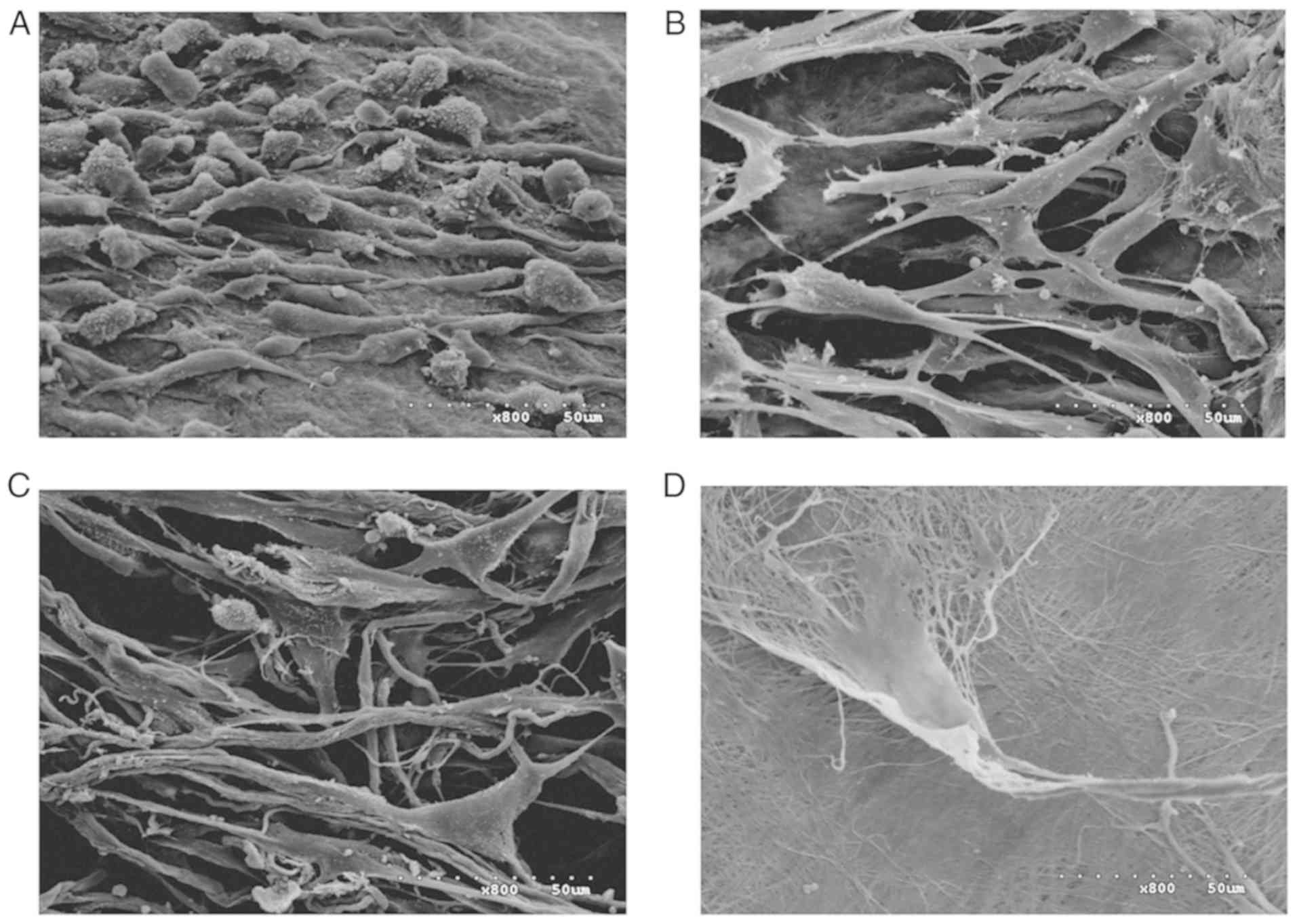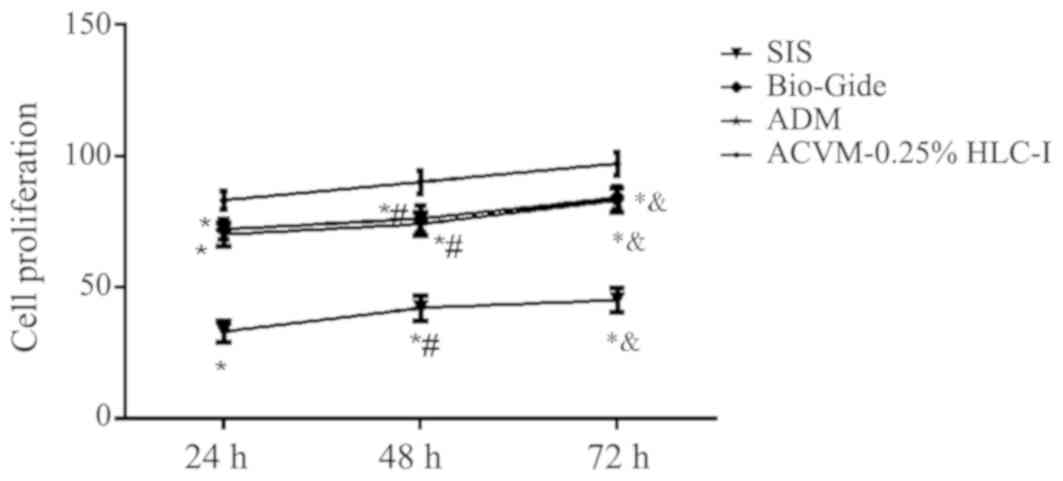|
1
|
Gao P, Jiang D and Li Z: The application
progress of human urine derived stem cells in bone tissue
engineering. Zhonghua Wai Ke Za Zhi. 54:317–320. 2016.(In Chinese).
PubMed/NCBI
|
|
2
|
Sun Z and Li J: Research progress of
tissue engineered ligament. Zhongguo Xiu Fu Chong Jian Wai Ke Za
Zhi. 29:1160–1166. 2015.(In Chinese). PubMed/NCBI
|
|
3
|
Yang Q, Xu HW, Hurday S and Xu BS:
Construction strategy and progress of whole intervertebral disc
tissue engineering. Orthop Surg. 8:11–18. 2016. View Article : Google Scholar : PubMed/NCBI
|
|
4
|
Ge L, Cao C, Chen S, Shao B, Li Q, Li Q,
Liu L, Liang Z and Huang Y: Preparation of laminin/nidogen adsorbed
urinary bladder decellularized materials via a mussel-inspired
polydopamine coating for pelvic reconstruction. Am J Transl Res.
9:5289–5298. 2017.PubMed/NCBI
|
|
5
|
Mi HY, Jing X, Napiwocki BN, Hagerty BS,
Chen G and Turng LS: Biocompatible, degradable thermoplastic
polyurethane based on
polycaprolactone-block-polytetrahydrofuran-block-polycaprolactone
copolymers for soft tissue engineering. J Mater Chem B.
5:4137–4151. 2017. View Article : Google Scholar : PubMed/NCBI
|
|
6
|
Wang L, Yang J, Ran B, Yang X, Zheng W,
Long Y and Jiang X: Small molecular TGF-β1-inhibitor-loaded
electrospun fibrous scaffolds for preventing hypertrophic scars.
ACS Appl Mater Interfaces. 9:32545–32553. 2017. View Article : Google Scholar : PubMed/NCBI
|
|
7
|
Faulk DM, Londono R, Wolf MT, Ranallo CA,
Carruthers CA, Wildemann JD, Dearth CL and Badylak SF: ECM hydrogel
coating mitigates the chronic inflammatory response to
polypropylene mesh. Biomaterials. 35:8585–8595. 2014. View Article : Google Scholar : PubMed/NCBI
|
|
8
|
Wang W, Deng D, Wang B, Zhou G, Zhang W,
Cao Y, Zhang P and Liu W: * Comparison of autologous, allogeneic,
and cell-free scaffold approaches for engineered tendon repair in a
rabbit model-a pilot study. Tissue Eng Part A. 23:750–761. 2017.
View Article : Google Scholar : PubMed/NCBI
|
|
9
|
Xie J, Peng C, Zhao Q, Wang X, Yuan H,
Yang L, Li K, Lou X and Zhang Y: Osteogenic differentiation and
bone regeneration of iPSC-MSCs supported by a biomimetic
nanofibrous scaffold. Acta Biomater. 29:365–379. 2016. View Article : Google Scholar : PubMed/NCBI
|
|
10
|
Baumgartner W, Schneider I, Hess SC, Stark
WJ, Märsmann S, Brunelli M, Calcagni M, Cinelli P and Buschmann J:
Cyclic uniaxial compression of human stem cells seeded on a bone
biomimetic nanocomposite decreases anti-osteogenic commitment
evoked by shear stress. J Mech Behav Biomed Mater. 83:84–93. 2018.
View Article : Google Scholar : PubMed/NCBI
|
|
11
|
Qiu XW and Wang JH: Efficacy of dermal
scaffold for promoting repair of acute full-thickness skin defects
in pigs. Nan Fang Yi Ke Da Xue Xue Bao. 38:363–368. 2018.(In
Chinese). PubMed/NCBI
|
|
12
|
Ramanathan G, Muthukumar T and
Tirichurapalli Sivagnanam U: In vivo efficiency of the collagen
coated nanofibrous scaffold and their effect on growth factors and
pro-inflammatory cytokines in wound healing. Eur J Pharmacol.
814:45–55. 2017. View Article : Google Scholar : PubMed/NCBI
|
|
13
|
Farkas B, Rodio M, Romano I, Diaspro A,
Intartaglia R and Beke S: Fabrication of hybrid nanocomposite
scaffolds by incorporating ligand-free hydroxyapatite nanoparticles
into biodegradable polymer scaffolds and release studies. Beilstein
J Nanotechnol. 6:2217–2223. 2015. View Article : Google Scholar : PubMed/NCBI
|
|
14
|
Nasonova MV, Glushkova TV, Borisov VV,
Velikanova EA, Burago AY and Kudryavtseva YA: Biocompatibility and
structural features of biodegradable polymer scaffolds. Bull Exp
Biol Med. 160:134–140. 2015. View Article : Google Scholar : PubMed/NCBI
|
|
15
|
Perry L, Flugelman MY and Levenberg S:
Elderly patient-derived endothelial cells for vascularization of
engineered muscle. Mol Ther. 25:935–948. 2017. View Article : Google Scholar : PubMed/NCBI
|
|
16
|
Hu WW, Wu YC and Hu ZC: The development of
an alginate/polycaprolactone composite scaffold for in situ
transfection application. Carbohydr Polym. 183:29–36. 2018.
View Article : Google Scholar : PubMed/NCBI
|
|
17
|
Sun T, Liu M, Yao S, Ji Y, Xiong Z, Tang
K, Chen K, Yang H and Guo XD: Biomimetic composite scaffold
containing small intestinal submucosa and mesoporous bioactive
glass exhibits high osteogenic and angiogenic capacity. Tissue Eng
Part A. 24:1044–1056. 2018. View Article : Google Scholar : PubMed/NCBI
|
|
18
|
Tohamy KM, Mabrouk M, Soliman IE, Beherei
HH and Aboelnasr MA: Novel alginate/hydroxyethyl
cellulose/hydroxyapatite composite scaffold for bone regeneration:
In vitro cell viability and proliferation of human mesenchymal stem
cells. Int J Biol Macromol. 112:448–460. 2018. View Article : Google Scholar : PubMed/NCBI
|
|
19
|
Awad NK, Niu H, Ali U, Morsi YS, Lin T, et
al: Electrospun fibrous scaffolds for small-diameter blood vessels:
A review. Membranes (Basel). 8:E152018. View Article : Google Scholar : PubMed/NCBI
|
|
20
|
Xu Y, Wu J, Wang H, Li H, Di N, Song L, Li
S, Li D, Xiang Y, Liu W, et al: Fabrication of electrospun
poly(L-lactide-co-ε-caprolactone)/collagen nanoyarn network as a
novel, three-dimensional, macroporous, aligned scaffold for tendon
tissue engineering. Tissue Eng Part C Methods. 19:925–936. 2013.
View Article : Google Scholar : PubMed/NCBI
|
|
21
|
Feng C, Hu J, Liu C, Liu S, Liao G, Song L
and Zeng X: Association of 17-β estradiol with adipose-derived stem
cells: New strategy to produce functional myogenic differentiated
cells with a nano-scaffold for tissue engineering. PLoS One.
11:e01649182016. View Article : Google Scholar : PubMed/NCBI
|
|
22
|
Lech CJ and Phan AT: Ball with hair:
Modular functionalization of highly stable G-quadruplex DNA
nano-scaffolds through N2-guanine modification. Nucleic Acids Res.
45:6265–6274. 2017. View Article : Google Scholar : PubMed/NCBI
|
|
23
|
Liu X, Wang J, Dong F, Song P, Tian S, Li
H and Hou Y: Cytocompatibility and biologic characteristics of
synthetic scaffold materials of rabbit acellular vascular matrix
combining with human-like collagen I. J Biomater Appl. 32:463–471.
2017. View Article : Google Scholar : PubMed/NCBI
|
|
24
|
Lalka SG, Oelker LM, Malone JM, Duhamel
RC, Kevorkian MA, Raper BA, Nixon JC, Etchberger KJ, Dalsing MC,
Cikrit DF, et al: Acellular vascular matrix: A natural endothelial
cell substrate. Ann Vasc Surg. 3:108–117. 1989. View Article : Google Scholar : PubMed/NCBI
|
|
25
|
Liu X, Wang J, Dong F, Song P, Li H and
Hou Y: Study of composite vascular scaffold combining with
differentiated VSMC- and VEC-like cells in vitro and in vivo. J
Biomater Appl. 32:219–229. 2017. View Article : Google Scholar : PubMed/NCBI
|
|
26
|
Heidemann LN, Gunnarsson GL, Salzberg CA,
Sørensen JA and Thomsen JB: Complications following nipple-sparing
mastectomy and immediate acellular dermal matrix implant-based
breast reconstruction-a systematic review and meta-analysis. Plast
Reconstr Surg Glob Open. 6:e16252018. View Article : Google Scholar : PubMed/NCBI
|
|
27
|
Sobti N, Ji E, Brown RL, Cetrulo CL Jr,
Colwell AS, Winograd JM, Austen WG Jr and Liao EC: Evaluation of
acellular dermal matrix efficacy in prosthesis-based breast
reconstruction. Plast Reconstr Sur. 141:541–549. 2018. View Article : Google Scholar
|
|
28
|
Pitman MJ, Kurita T, Powell ME, Kimball
EE, Mizuta M, Chang S, Garrett CG and Rousseau B: Vibratory
function and healing outcomes after small intestinal submucosa
biomaterial implantation for chronic vocal fold scar. Laryngoscope.
128:901–908. 2018. View Article : Google Scholar : PubMed/NCBI
|
|
29
|
Zhou Q, Teng F, Zhang Y, Sun Q and Meng G:
Evaluation of transventricular placement of porcine small
intestinal submucosa stent valves in the pulmonary position in
juvenile sheep model. Interact Cardiovasc Thorac Surg. 27:295–300.
2018. View Article : Google Scholar : PubMed/NCBI
|
|
30
|
Liu X, Wang J, Dong F, Li H and Hou Y:
Induced differentiation of human gingival fibroblasts into
VSMC-like cells. Differentiation. 95:1–9. 2017. View Article : Google Scholar : PubMed/NCBI
|
|
31
|
Choi HJ, Lee JJ, Lee JB, Sung HJ, Shin JW,
Shin JW, Wu Y and Kim JK: MG-63 cells proliferation following
various types of mechanical stimulation on cells by auxetic hybrid
scaffolds. Biomater Res. 20:322016. View Article : Google Scholar : PubMed/NCBI
|
|
32
|
Zhang W, Choi JK and He X: Engineering
microvascularized 3D tissue using alginate-chitosan microcapsules.
J Biomater Tissue Eng. 7:170–173. 2017. View Article : Google Scholar : PubMed/NCBI
|
|
33
|
Wang Y, Yin P, Bian GL, Huang HY, Shen H,
Yang JJ, Yang ZY and Shen ZY: The combination of stem cells and
tissue engineering: An advanced strategy for blood vessels
regeneration and vascular disease treatment. Stem Cell Res Ther.
8:1942017. View Article : Google Scholar : PubMed/NCBI
|
|
34
|
Saberi EA, Karkehabadi H and Mollashahi
NF: Cytotoxicity of various endodontic materials on stem cells of
human apical papilla. Iran Endod J. 11:17–22. 2016.PubMed/NCBI
|
|
35
|
Wu T, Huang C, Li D, Yin A, Liu W, Wang J,
Chen J, Ei-Hamshary H, Al-Deyab SS and Mo X: A multi-layered
vascular scaffold with symmetrical structure by bi-directional
gradient electrospinning. Colloids Surf B Biointerfaces.
133:179–188. 2015. View Article : Google Scholar : PubMed/NCBI
|
|
36
|
Jiang B, Akar B, Waller TM, Larson JC,
Appel AA and Brey EM: Design of a composite biomaterial system for
tissue engineering applications. Acta Biomater. 10:1177–1186. 2014.
View Article : Google Scholar : PubMed/NCBI
|



